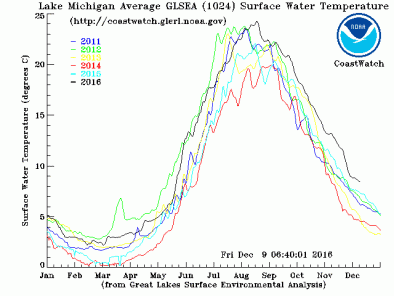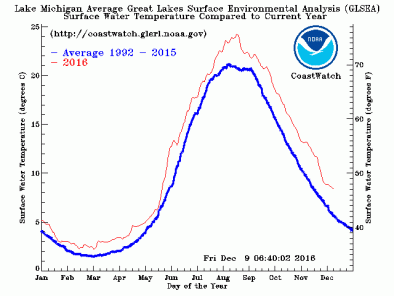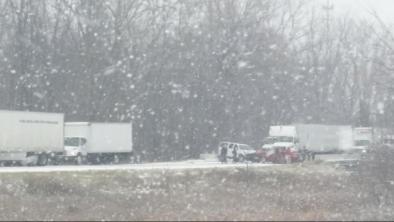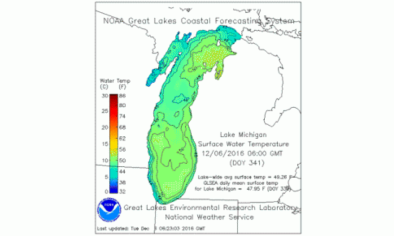Unusually Warm Great Lakes Fueling Lake Effect Snow
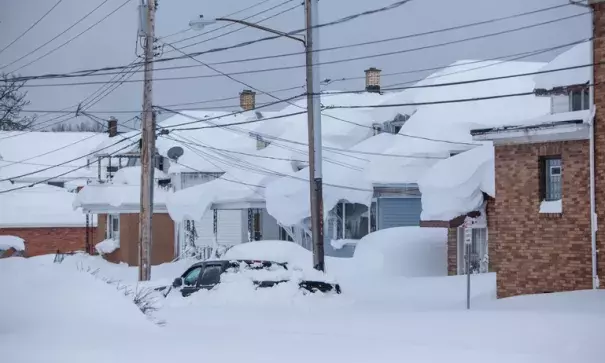
Snow is piling up in parts of western New York, Michigan, Pennsylvania and Ohio thanks to an incursion of Arctic air blowing over the unusually warm waters of the Great Lakes. Totals are expected to be between several inches to more than a foot, and more could be in store next week.
The contrast between cold air and warm water fuels what is called the lake effect: As the air blows over the lakes, water evaporates into it and turns to snow that falls — sometimes in extreme amounts — on coastal areas.
It’s not unusual to see lake effect snow at this time of year because it is when the first bouts of cold air begin to descend over waters that still retain some of summer’s warmth. But in the future, lake effect snow could occur more often and later in the cold season as global warming raises water temperatures in the Great Lakes, preventing the formation of winter ice that normally eventually shuts down the lake effect mechanism.
Currently, waters in the Great Lakes are running up to about 8°F above the long-term average.
...
A very mild autumn helped to keep temperatures in the Great Lakes elevated; Wisconsin, Michigan and Minnesota all had their warmest autumn (as did the contiguous U.S. as a whole), with temperatures running about 6°F above average.
The Upper Midwest has the fastest warming winters of any region in the country, with average temperatures climbing 1.12°F per decade since 1970 and expected to rise another 5.4°F by mid-century.
That regional warming is also driving up the temperatures of the lakes and driving down ice cover. Since the early 1970s, total ice cover in the Great Lakes has declined by 71 percent.
“One pretty robust climate change outcome that we see in the future is warmer lakes,” Brent Lofgren, a GLERL climatologist, said.
Last year was emblematic of this decline, with warm winter conditions keeping total ice cover in the lakes below 30 percent for most of the season. The sparse ice cover helped lead to a lake effect event that brought 3 feet of snow to New York’s Oswego County in February, a very rare event.
Related Content
